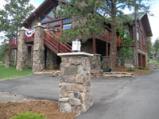Belleau Masonry

Belleau Masonry, Inc.
We install brick, block, and stone. We specialize in residential construction, remodels, repair and restoration, landscape masonry, and some smaller commercial work. We are family owned and operated for over 25 years! We’ve achieved customer satisfaction through thousands of high quality installations. No job to small. Call or email us for a free quote and design consultation!
Energy Efficient
Masonry materials have always been recognized as sturdy and attractive, but few realize that they are energy-efficient and earth-friendly, too. In today’s environmentally conscious world, masonry materials are “green” throughout their life cycle. Brick originates from Colorado’s own clay, which is a nearly inexhaustible natural resource. During the clay mini





